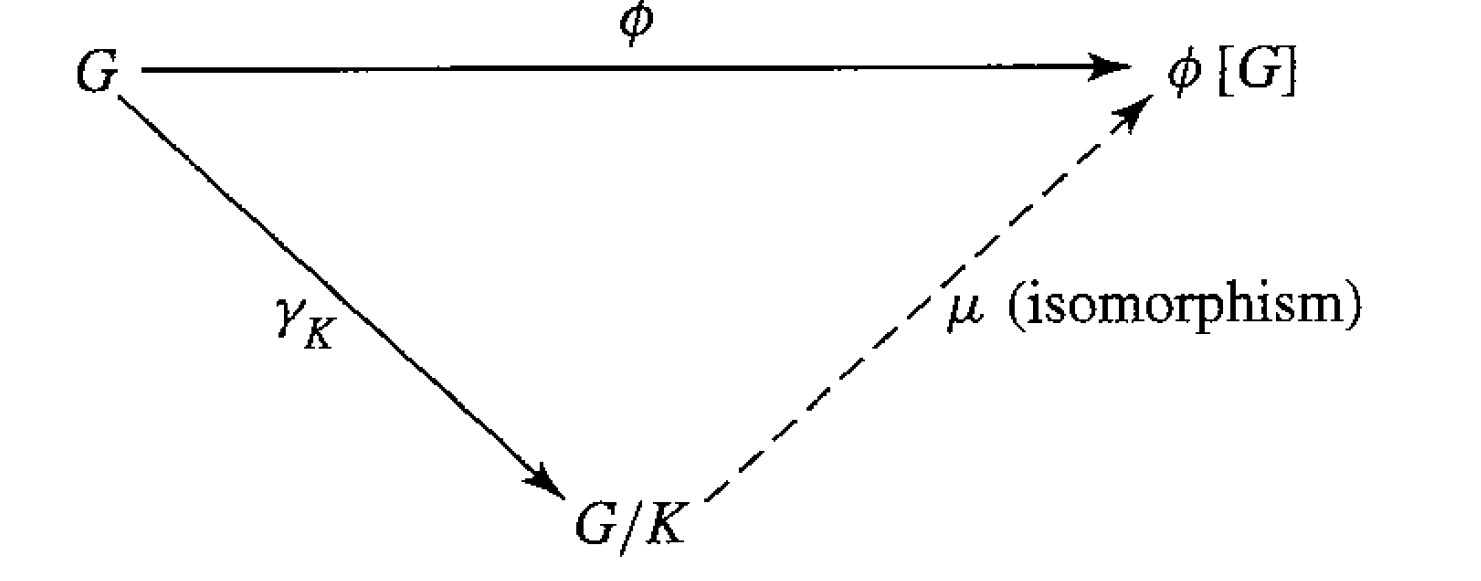-
Let
and be binary algebraic structures. A mapping is a homomorphism if - The homomorphism property says that the product of the maps is equal to the map of the products.
-
(Fraleigh e13.49) The composition of homomorphisms is a homomorphism.
-
(Fraleigh 13.12) Let
be a homomorphism. -
Let
be a homomorphism. The kernel of , denoted is defined as the subgroup Where
is the identity of . - We may think of this as the set of points which the homomorphism maps to a singularity
- Note that by definition
- We may think of this as the set of points which the homomorphism maps to a singularity
-
(Fraleigh 13.15) If
and , then we have the cosets of as It follows that the partition of
into cosets is the same. - Proof: We have
- Proof: We have
-
(Fraleigh 13.18) A homomorphism is one to one if and only if
. - Intuition: Every element
can be written as where . Clearly a homomorphism can only be one-to-one if and only if maps to a unique element in , if and only if are unique, if and only if is unique, if and only if and only. That is, and so
- Intuition: Every element
-
(Fraleigh 14.11, Fraleigh 34.2) The Fundamental Homomorphism Theorem / First Isomorphism Theorem. Every Factor Group gives rise to a natural homomorphism.
Let
be a homomorphism with kernel . Then
is a group and given by is an isomorphism. In other words If
is the homomorphism given by , then We refer to
and as the natural (canonical) isomorphism and natural (canonical) homomorphism respectively. - If
is onto, then the isomorphism changes to - (Fraleigh 13.20)
is a normal subgroup of - (Fraleigh 34.3) Let
and be the canonical homomorphism. Then the map from the set of normal subgroups of containing to the set of normal subgroups of given by is bijective.
- If

- An isomorphism is a homomorphism that is bijective.
- An endomorphism is a homomorphism from
to itself.